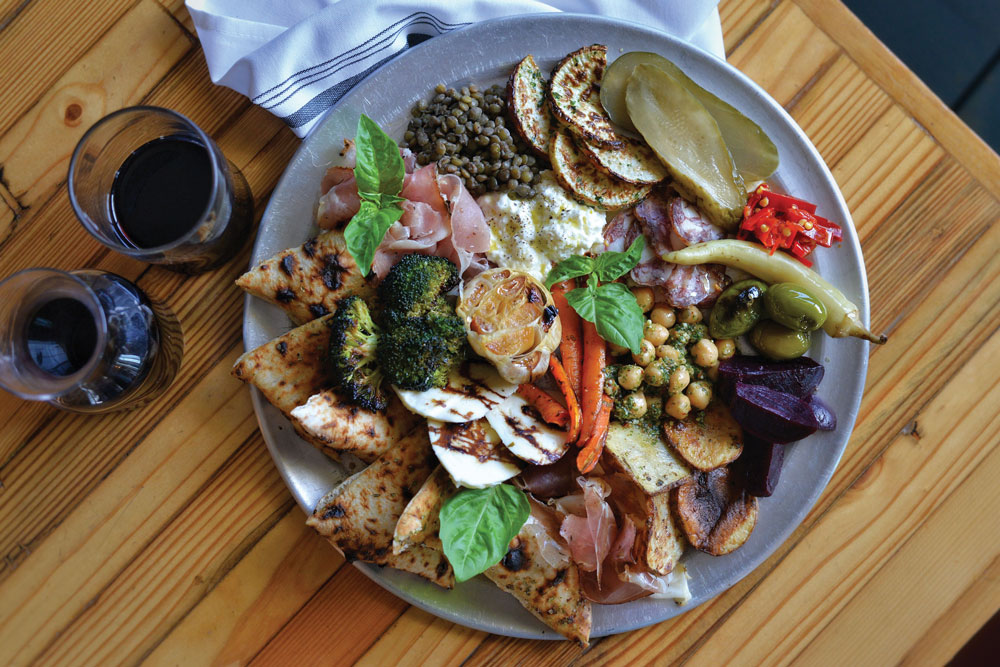As The Byrds sang in the ’60s, to everything there is a season, and the adage rings true in both life and nature. Who doesn’t relish that first crop of summer-ripe tomatoes, take comfort in stick-to-your-ribs sweet potatoes when temperatures drop, or celebrate the advent of spring with snappy asparagus spears?
If your menu remains unchanged throughout the year, you’re missing out on myriad opportunities to tap seasonal ingredients for some truly unique menu items—and take advantage of the freshest produce available. These pizzeria owners and chefs explain how to harvest a bumper crop of profits in all four seasons.
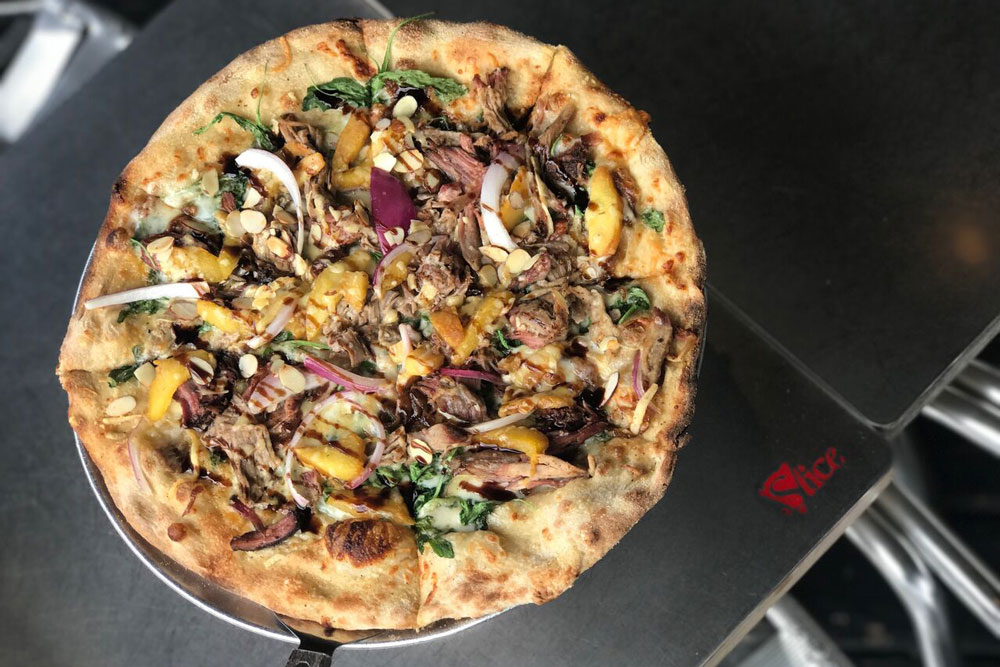 |
|
Slice’s summertime Chilton pizza, with local peaches, was featured in a Cosmopolitan.com article called “Where to Find the Weirdest, Most Delicious Slice of Pizza in Your State.” |
Ingredient Inspiration
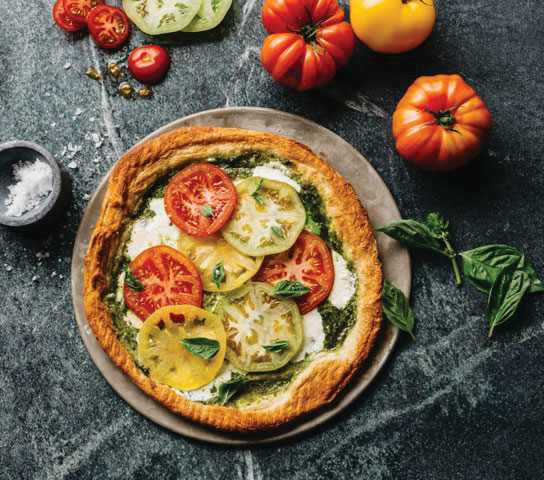 |
|
Ripe heirloom tomatoes make a colorful splash on summertime pies at Oath Craft Pizza. |
Availability of various in-season items varies according to your geographic location, so do your homework to find out what’s best and when. Slice Pizza and Brewhouse in Birmingham, Alabama, takes advantage of autumnal potato harvests with its Loaded Baked Potato Pizza. Slice also mines the nearby Gulf of Mexico for top-notch oysters in winter and celebrates crawfish season in spring with the Low Country Boil Pizza.
But Slice’s sweet-and-savory summertime smash has caused the biggest stir: With fresh Chilton County peaches, smoked pork shoulder, Gouda, Parmesan, shaved red onions, arugula and almonds, the Chilton pie was featured on Cosmopolitan.com and in Sports Illustrated.
At Boston-based Oath Craft Pizza, head of culinary operations Mike Hazen looks for asparagus and peas in spring, fresh heirloom tomatoes and corn in summer, and roasted tomatoes and meats in fall. For winter, he crafts salads and white pies that cater to customers’ healthy (if fleeting) new-year resolutions. “I like to make seasonal menu item and ingredient decisions based on people’s lifestyle choices,” Hazen says. “I see a big demand from our guests looking for transparency in healthy ingredients, so we top our pizzas only with non-GMO, chemical-free, sustainable, humane and ethically sourced ingredients.”
Chef Jason Garcia takes a similarly painstaking approach when sourcing for Il Forno in San Antonio, Texas. He plucks his basil from the gardens out front. Summertime brings fresh summer squash and tomatoes, while, during the summer and fall, he cuts zucchini into ribbons for salads or slices for pizza toppings. Also in the fall, apples are procured from northern Texas, and hard squashes like butternut and pumpkin are available locally. The butternut squash is thinly sliced for a vinaigrette-laced salad when lettuces are less available, and pumpkin makes an appearance in antipasto. In the winter and spring, abundant crops of leafy greens translate to nutrient-rich salads, and other springtime greenery (arugula, broccoli, peas and pea shoots) reflects the return of foliage after winter’s chill.
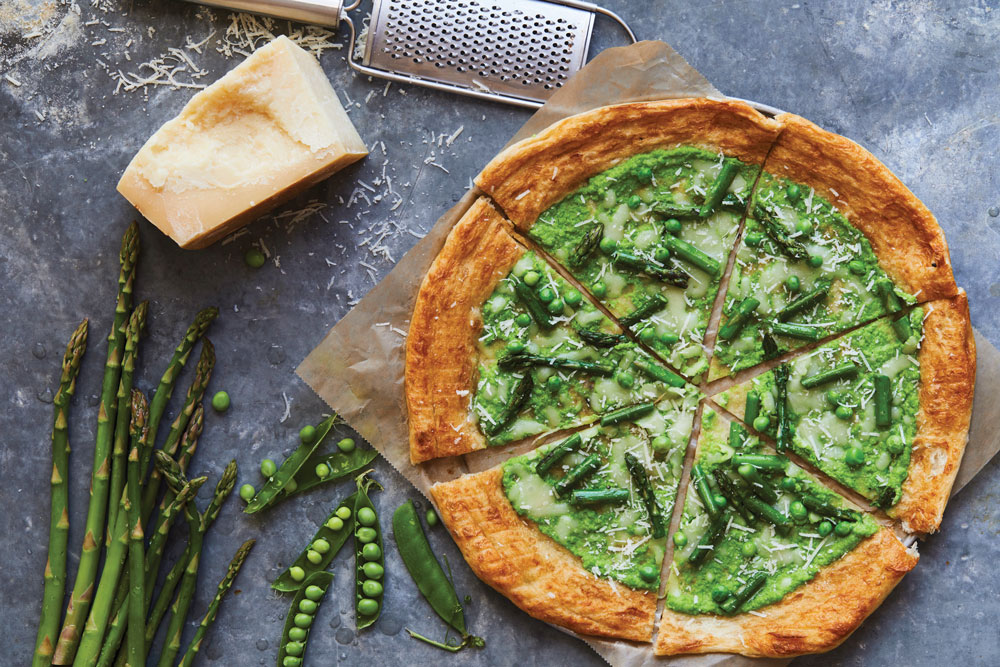 |
|
The Spring Fling pizza at Oath Craft heralds the springtime with in-season ingredients like pea pesto, roasted asparagus and garden peas. |
Pricing for Profits
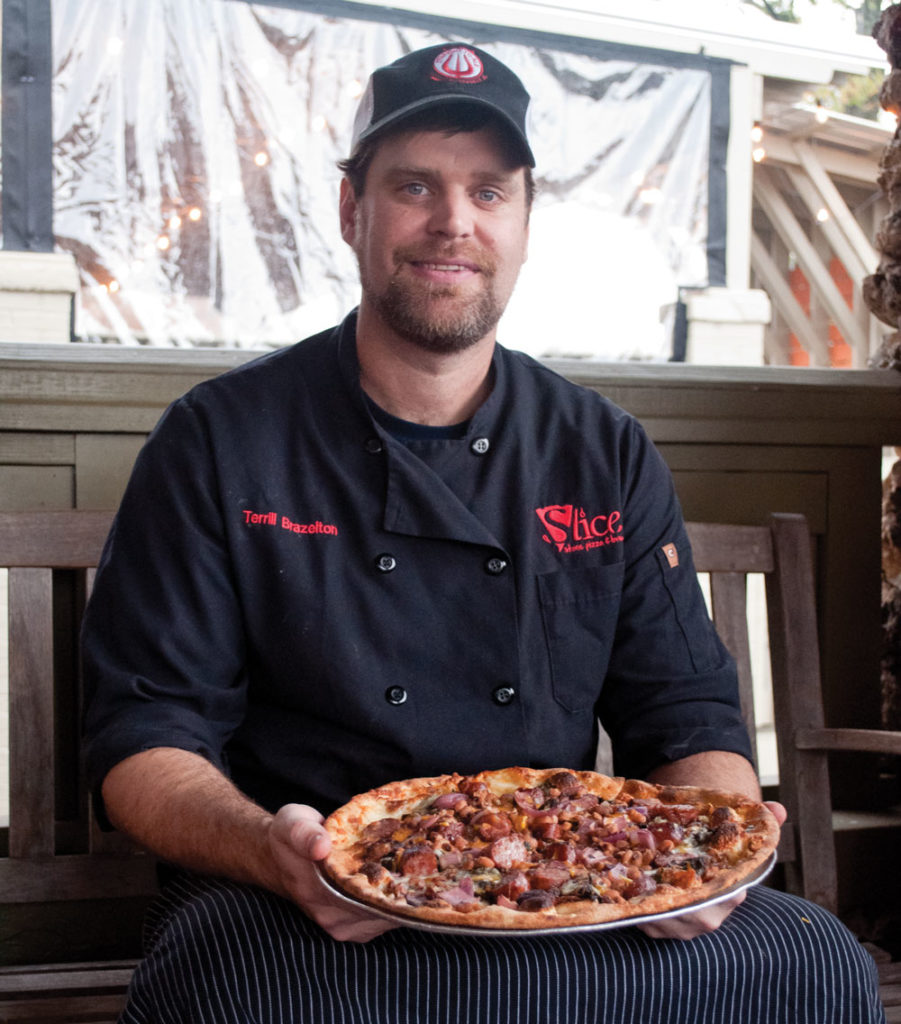
The Local Angle |
| While it’s not required to work locally when sourcing seasonal ingredients, not doing so seems to defeat the purpose altogether. And today’s customers love knowing where their food comes from while uplifting the community as a whole. “We believe it’s our responsibility to take care of our local farmers,” says Terrill Brazelton, chef at Slice Pizza and Brewhouse in Birmingham, Alabama. “They’re taking the time and effort to produce quality products, so why not give them a try? It’s not that we ‘should,’ we have to—it’s imperative to the survival of our local economy, our city. And eating local is what people want. They want to feel like they’re making a difference for their community and local farmers, putting their dollars back into their community and supporting local business.” |
Seasonal-savvy chefs and owners agree that buying in-season, local produce can cost more—but customers are also willing to shell out for better tasting, fresher, sustainable ingredients. “People will pay for quality, for local, for helping their community,” says Terrill Brazelton, chef at Slice. “If you advertise locally grown and sourced ingredients on your menu, they will sell.”
And, says Slice co-founder Chris Bajalieh, keeping in constant communication with farmers benefits both buyer and seller. “We might get a call that one farmer has a certain amount of heirloom tomatoes left to sell, and we purchase those at a lower price,” he explains. “Then we get to create a special for our customers at a good price for them. And our customers know they can come back and expect something new and fresh every time.”
Of course, Bajalieh adds, food pricing is erratic, and sometimes the operator must absorb some of those fluctuations. Maybe the price of eggplant rises one week, then the price of heirloom tomatoes decreases the next week. “You absorb on one end and gain on the other,” he says. “We can’t adjust menu prices every time that happens. It’s important that we stay consistent.”
—Mike Hazen, Oath Craft Pizza
Garcia agrees that supporting people in his community while buying locally, sustainably and organically raised produce, costs more—but it’s worth it. “Because our costs are higher, we have to charge a little more than someone who buys bulk from across the world, but our clientele supports us keeping things local,” he says. “Part of the experience of eating here is that you know your food is a part of you, because it’s a part of your region. That tomato has seen the same amount of rain and sun that you have, so you’re more connected.” And guests are kept well-informed with a board posted at the restaurant that tells them where its produce comes from that week—so they not only taste the difference, they see what they’re paying for.
And there are ways to keep costs in check. First, Brazelton recommends knowing your customers and portioning appropriately. “Don’t price yourself out of your customer base,” he advises. “When you know your clientele, you know what they are—or are not—willing to buy. If there’s a choice between asparagus and superexpensive saffron, I’m going with the asparagus.”
Minimizing waste also keeps costs down. For Garcia, shopping seasonally means that waste is usually a nonissue. For example, organic carrots are very small, requiring just a scrub and wash—meaning no peel waste. Meanwhile, a compost program for basil stems, onion ends and lettuce bottoms ensures that inedibles are repurposed, and any leftover produce (including tomatoes, carrots or cucumber) are pickled and preserved for use later in the year. “The challenges we face have less to do with having too much and more to do with having an abundance of a limited list of products,” Garcia explains. “We simply have to get creative to use the types of foods that are in season in multiple ways.”
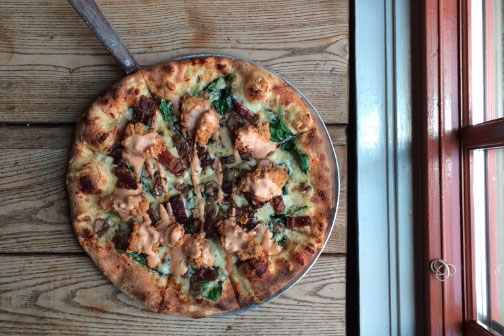 |
|
Think outside produce for seasonal inspiration; Slice Pizza and Brewhouse taps the Gulf in winter, highlighting fried oysters on its Rockefeller pie. |
An Effortless Mystique
Oath Craft Pizza promotes its seasonal items through signage, website and social media, as well as in partnerships with key influencers. Hazen believes happy customers provide the best impetus to visit through impassioned word-of-mouth. Meanwhile, a new Monday family night, with coloring books and a free dessert pizza, offers something for the entire family to enjoy while exposing the business (and its latest seasonal items) to customers of all ages.
Luckily, working seasonally creates an effortless mystique; after all, the limited-time nature of these items entices customers to visit, stat. Slice runs seasonal specials for only two or three weeks at a time to maximize supply and demand while exciting customers with new, cutting- edge combinations—and less commitment. “Don’t be afraid to make mistakes,” Brazelton says. “Link the customers to their area and let them explore their heritage and what is available and indigenous to that area or time of year. It makes them better buyers.”
In the spirit of that open communication, Brazelton believes social media is the most effective way to promote Slice’s seasonal menu items, but talking to regulars is also crucial. “If you change up your specials on a regular basis, your regular customers should be a part of that,” he notes. “It spreads by word-of-mouth, so get in touch with the familiar faces in your restaurant and make it fun and exciting for them. Whether it’s through social media, talking to your regulars, or table tents, make sure you get the word out there.”
Finally, boost interest by thinking beyond the pie. In addition to seasonal specialty pizzas, Slice offers of-the-moment small plates and beers, also sourced locally. By spotlighting a beer in the pizzeria, the brewery drives traffic to Slice, creating symbiotic support. “It’s also important to incorporate your seasonal menu with your community involvement,” says co-founder Jeff Bajalieh. “We host a variety of events at the restaurant, including our brewery spotlights and fundraisers with nonprofit organizations every Tuesday (called Dough Raisers), and we participate in citywide events and happenings—all of which provide an opportunity to promote the seasonal menus and serve our unique pizzas while fostering community spirit and supporting local!”

